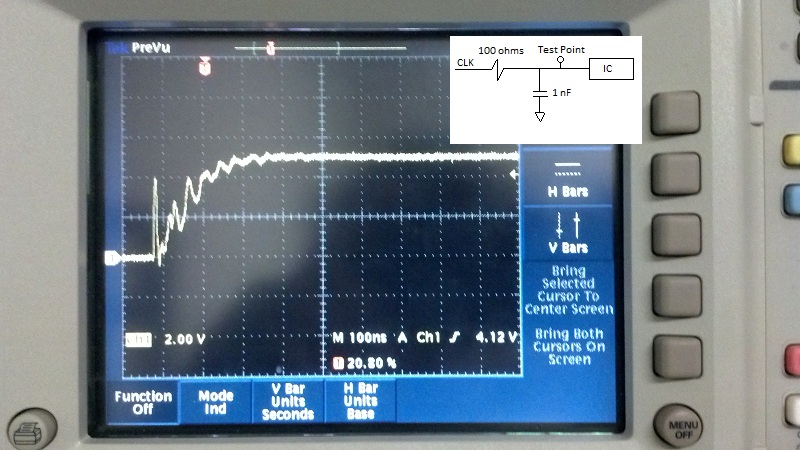I have a PCI 5V GPIO card which bit-bangs SPI over a 10-foot cable. The SPI clock is running at 800Khz. The cable connects to a board and the SPI lines feed directly into the SPI IC's. I know SPI is a short, board level communication, but I can't change any of that going forward.
When I looked at the SPI clock and MOSI lines, I was seeing a 12V pulse on rising/falling edge that lasted for about 40ns. That tells me there is significant transmission line inductance. I can't change anything on the PCI card/cable and I am not able to slow down the drive strength of the line. I tried adding 100 ohms series resistance on the board side, but that had no effect since the inductance is still between the drive and the series resistor. An RC filter on the board side of 100 ohms, 1nF also had little effect.
My next step, is to add an IC buffer that can handle the spikes and not pass them through. I just wanted to see if anyone else had a suggestion or could recommend a good IC buffer.
Thanks.





